(first posted 9/12/2012) Writing this Curbside Classic took the same trajectory as the Blazer. It started as a legitimate nod of acknowledgment to the S-10 Blazer as the trailblazer of the compact SUV market. But as soon as I got a bit further along, I realized just how badly GM bungled the huge opportunity for the baby Blazer in a segment that became a monster money machine for Jeep and Ford. As all the mistakes were so prototypically GM, I just had to rewrite it as a Deadly Sin, even though it would have been easier to just leave it as it was. Which is exactly what GM’s Deadly Sin with the Blazer was: leave it as it was, practically forever. Well I’m not ready just yet to have someone document my Deadly Journalistic Sins, so here goes: Blazer, take two.
Before any mud-slinging begins, lets define the new category that this Blazer blazed. Sure, the Jeep CJ was always compact, as were the first generations of Scout and Bronco. But they were, first and foremost, uncompromising and gnarly 4×4 off-roaders,. The1983 S-10 Blazer was the first of a new wave of compact and reasonably comfortable four-wheelers that were every bit as much (and perhaps even more) at home on the road than off it.
The Isuzu Trooper II (above) and the Mitsubishi Montero (Pajero) are the only other vehicles that might contest the compact Blazer’s claim to its eponymous name. Both appeared on our shores at about the same time the Blazer started rolling off GM’s assembly lines.
The Montero (Dodge Raider version shown here), which then came only in a short-wheelbase version was rather trucky, more of a Japanese update to the Jeep or Scout than the pioneer in a new category. And the Trooper II was, well, a longer- wheelbase version of the basic Montero formula. I’ve got a soft spot for both of them (especially the Trooper II), and they’ll be covered in a future CC. But lacking a V6, a softish ride, the “cute” styling element–and probably most importantly, Chevrolet’s vast dealer network–both were, at least initially, relegated to something like outsider status.
The baby Blazer appeared during my L.A. years. And what a godsend it must have been to the Chevy dealers in the decade Californians started treating domestic passenger cars like airline passengers with hacking coughs–especially GM and Chrysler dealers, as Ford was still getting some Sunshine State love for its Taurus, Mustang and T-Bird. During its first couple of years the Blazer was a hot item, especially with the ski set. My Peugeot 404 wagon was looking a wee bit archaic in the Mammoth Mountain Main Lodge parking lot amongst the shiny new white and red Blazers driven by blonde ski bunnies.
Like the ski bunnies, the Blazer had its superficial attractions; dig a little deeper, and things weren’t nearly as pretty. The GMT 330 platform that underpinned the Blazer and S-10 pickup was an uninspired piece of work, unlike that of the Jeep Cherokee (XJ) that followed the Blazer by a year. With its dull handling, crude ride and mediocre build quality, the Chevy was quickly outclassed by the Cherokee.
Obviously, the seeds of the Blazer’s arrival in ’83 were sown during the very painful 1981 energy crisis, which obviously motivated Chevrolet to develop a little brother of the massive K-5 Blazer. But in view of their new-found early-’80s zeal for fuel efficiency, some rather dubious engine choices showed up under the S-10 Blazer’s hood. The standard mill was the rough-and-tumble 2.0 OHV four that also powered so many J-cars (Cavaliers, et al.). In California, an Isuzu Trooper-sourced 1.9-liter four was used for smog certification reasons. Odd. Managing a mere 83 hp, the 2.0-liter might have been barely passable in a stick-shift, 2WD S-10 pickup, but the B-O-F Blazer was not a relative lightweight like the unibody Cherokee. And if you really wanted to be thrifty, you could order the 2.2-liter diesel, also from Isuzu, which made all of 58 horsepower! Good times. They were durable motors, though.
I remember hearing a couple of diesel-powered S-10 pickups back in the day, but not a Blazer. Would a 58-hp diesel Blazer be collectible? In reality, probably just about every one of them came with the optional 2.8-liter V6, the longitudinal version of GM’s evergreen 60-degree V6. It sucked an awful lot of fuel to generate a measly 110 hp, but with gas prices dropping like a stone during the ’80s, who cared? Well, I did.
The Niedermeyers succumbed to SUV fever and the (big) monthly payment lure, so the dear old 404 wagon that had cost me $75 (and a junkyard motor) gave way to a $16k ’85 Cherokee with that same Chevy 2.8. It was anything but brisk, and slurped gas at almost twice the rate of the Peugeot, but now we officially were Yuppies! Well, you had to be one to afford these trucklets, which were anything but cheap. Decently optioned, with basic amenities that are all standard today, transaction prices were stiff; adjusted for inflation, our Cherokee ran about $35k. What’s more, the current interest rates on loans were stratospheric. No wonder longer-term car loans were invented back then.
Mileage-wise, it took a minor miracle for the 2.8-liter V6 to break out of the mid-teens. Reliability was another marginal affair. Apparently, a huge number had main rear seals that self-destructed in short order. We managed to dodge that bullet, but not with the world’s most complicated and expensive carburetor. Too cheap to install fuel injection, Rochester’s answer to the latest round of emissions regs was a Rube Goldbergian affair that allowed no adjustments short of those then constituting a federal offense. The inevitable replacement cost over $500 bucks ($1000 adjusted), and just for the carb. I used to buy nice used cars for less than that. Eighties-style new car ownership was a painful adjustment for me.
The Blazer got some bigger engines after a few years, although both the Iron Duke 2.5-liter four and the 4.3-liter V6 displayed notoriously unrefined manners. Still, the Blazer’s deadliest deficiency was the lack of two rear doors. Once the four-door Cherokee appeared, the Trooper and Montero quickly sprouted extra doors; in fact, those two small Japanese firms managed to bang out four-door versions in no time at all. Compact SUVs were becoming the station wagons of the day, and who wanted to return to the contortions of the long-gone two-door wagons, especially with baby seats and seat belts?
Even so, it took GM almost eight years to take a Sawzall in hand and carve out some damn rear doors. By then the Cherokee had long stolen the show, at least until the new Ford Explorer appeared in 1991. Although the Blazer’s design, unlike the Cherokee’s, didn’t age at all nicely, it wasn’t until 1995–12 years later–that GM found fit to give it a new skin. By then, it had long been relegated to a distant third.
GM seriously fumbled the ball with the Blazer. For over 20 years, it undertook no serious effort to adequately improve a vehicle that had been the crudest in its class from the start. During its latter years, it seemed a pathetic joke compared with the continually refined Explorer.
The reskinned Blazer stumbled along on the same old tired platform until finally expiring, in 2005. But in Brazil, you could still relive the early-’80s days of GM and buy a new old Blazer (offered only with a four-cylinder engine) up until last year.
Indeed, the first shall be last, and in more ways than one.

















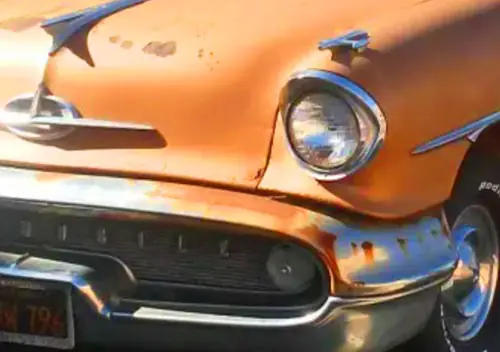
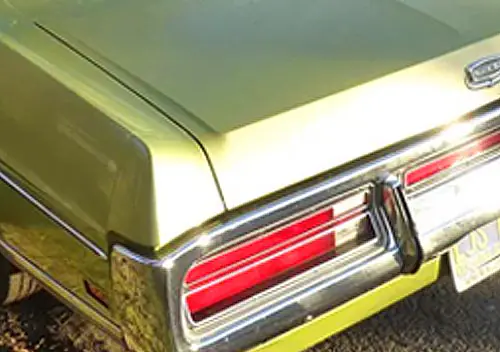
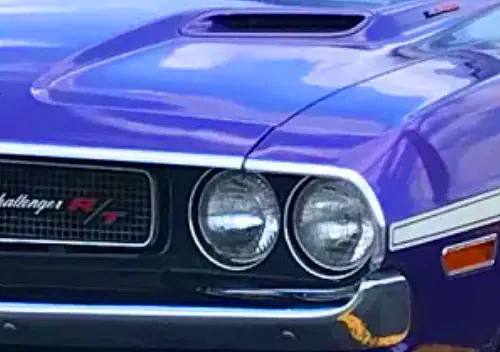

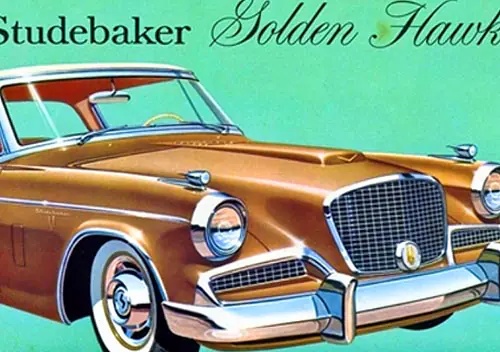
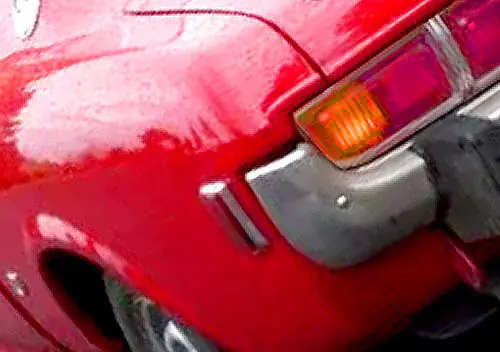
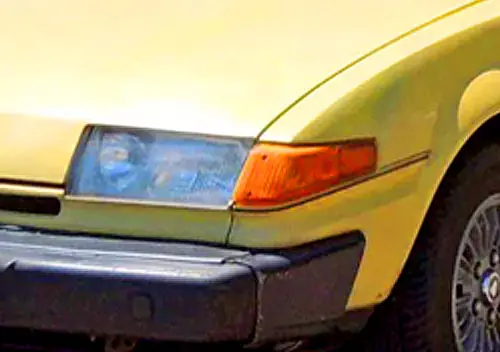
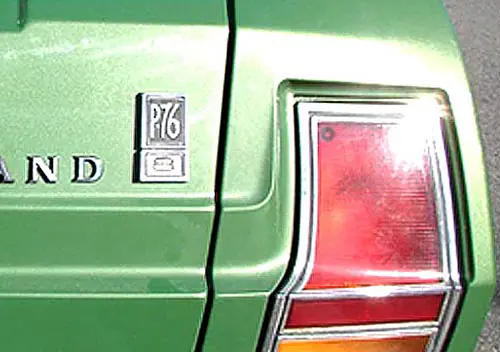
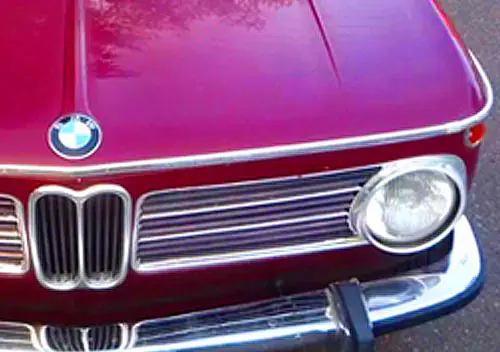
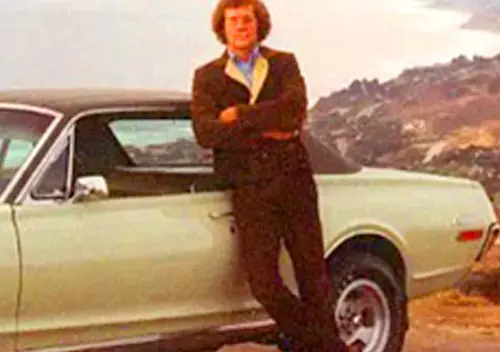
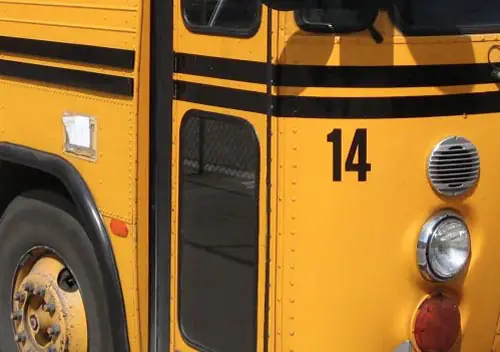
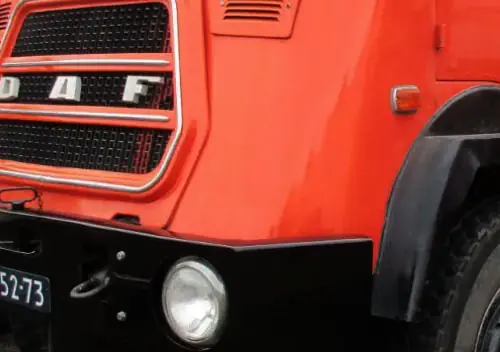
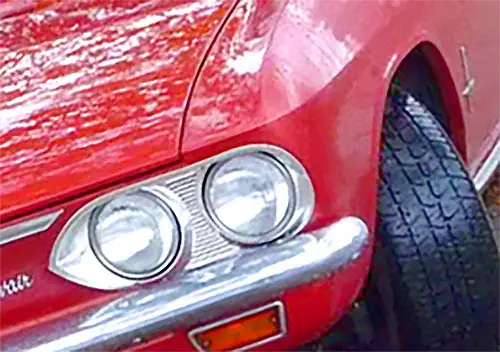
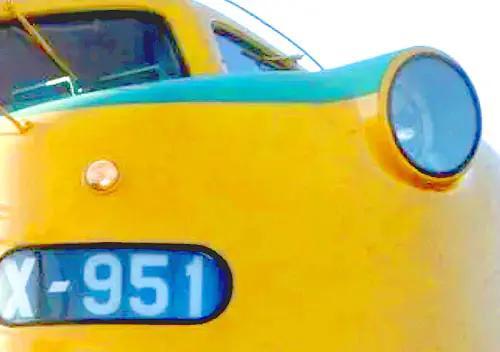
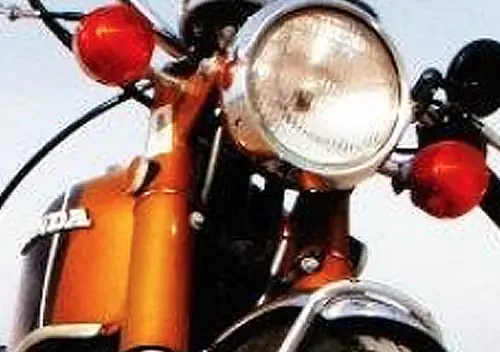
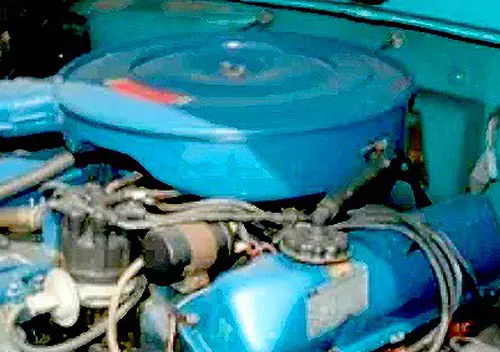
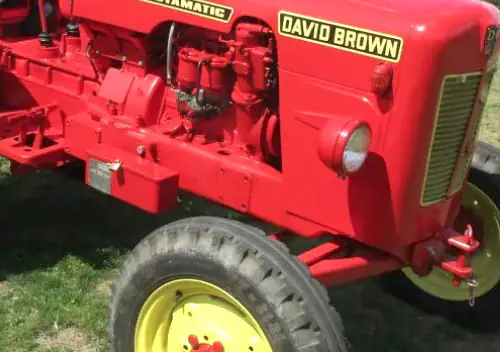
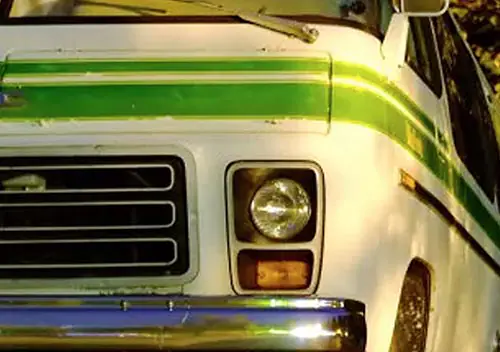

I spent a lot of time this summer driving a 2004 Jimmy SLS, two door with stick shift. It was a security patrol vehicle at the campground where I worked. Was it unrefined? Absolutely. But the thing was loads of fun, even at low, low speeds. The lack of refinement may have repelled buyers when new, but now, in this age of smooth-n-swift CUVs, it just adds to the Jimmy/Blazer’s appeal. I’m actually seriously considering buying one when I shop for a car after college graduation next year. They seem to be decent value used.
The Brazilian Blazer’s front clip is attractive! It’s what the thing should have been in the US.
The one from the same time of the American used to be a little bit nicer.
The Trooper and Cherokee shown here look like (poor) Range Rover clones to me. I really prefer Series LRs (petrol only) or newer diesel LR Defenders to any of these vehicles. Cherokee is the vehicle responsible for ushering in the urbanite truck station wagon craze which ultimately led to US domestic manufacturers’ downfall. It has a huge black mark next to it in my book for that. They don’t deserve to be mentioned in the same sentence as Scout or (the real) Jeep.
No comment from me on this vehicle’s Deadly Sin status. It is really becoming a cliché.
Ten years ago, my wife was a real estate agent during the housing bubble. Given that I had virtually tore her head off the first time she took our M3 into a new housing development (can’t expect the potential clients to walk on dirt now, can we?) it was immediately traded in for a Cherokee. Yes, I looked at a Blazer, especially because our S-10 pickup was giving us such excellent service (and continued to until the day I traded it in). No comparison. That Cherokee was the first of two, both 2000’s (plus a 1990 Grand Wagoneer, my personal play toy, who cares about gas mileage?) . . . . . . and if I ever have the justification for another SUV on the property, it’ll be another used Cherokee.
They never should have quit producing that car/truck. Dated, yes. But as a work tool, it never went out of style. And all this praise for a Cherokee in an article about the Blazer probably says it all.
My dad had an 85 S10 with the Iron Duke and then when the transmission started to go, he traded it for a 91 S10 with the 2.8 and 5 speed. He kept that 91 for almost four years, until 2002 when he got a call about a used Blazer. It was a 98 with 109k on it. But it had four doors and he had two teenagers at the time. The S10 was still working well, but he felt he had to take the opportunity now. Ten years later he is still driving his Blazer with 230k on it. Is it unrefined? Even as an LT, certainly. But the only major repair he had to do was replace the transmission. He will drive that thing until the wheels fall off.
I currently drive a 85 S10 2.8 would your dad be interested
And it’s just a matter of time before the wheels fall off, given their healthy appetite for ball joints.
GM sold a number of the last version in Japan as a ‘luxury’ vehicle in factory RHD.
A lot of them have now been imported/dumped into Australia and NZ *ugh*
I saw a gold coloured one similar to this a few months ago, I did not know how it came to be out here until now.
I remember riding in the first and second generations of these and always thinking how wallowy the suspensions were and how rough the drivetrain was. I had an ’89 Trooper 4 with the 2.6L and auto trans. It had a thin layer of refinement on the interior and exterior but that was completely superficial–its utility roots were obvious the minute you drove it. With the 4 cylinder/auto combo it was pretty slow and I doubt that the mpg was any better than the 2.8 GM six that you could get in a trooper, but the isuzu 4 cylinder was much more durable. I sold it a few years ago with 190k miles and I just saw it around town yesterday.
For the intro of the 4-door version, GM wasn’t really late at the party. Nissan and Toyota bring their 4-door versions of the Pathfinder and 4Runner as well. When I check the design of the original Pathfinder in 1987 designed under a staff leaded by former GM designer, Jerry Hirshberg, seems to have some Blazer designs influences. Here a vintage ad at http://www.adclassix.com/a4/87nissanpathfinder.html
Today, the Pathfinder is morphed into a CUV “soccer mom”.
If you want a Pathfinder that hasn’t morphed into a CUV just look to an Xterra.
As much as I love mine it’s still a pretty crude machine though too.
Everybody bad mouths the blazer and I reckon it’s deserved. Can’t help but wonder though. Have a 91 S10 that I wish I had driven since 91. 4.3 with 700r4. I wish it was a couple years older because it wouldn’t need smog inspections.
How could you do such a good job with a durable long lasting pickup and do so badly with a blazer. I don’t think they did. I think the difference is expectations. I couldn’t care less if it’s unrefined. So, pretty much, am I.
At least GM finally got it right with the latest version of the Equinox. Not really suitable for any kind of off-road duty, but it’s not like the S-10 Blazer was much better for that, either. The S-10 Blazer is just one more in GM’s standard methodology of building the absolute bare mininum that the market requires to maximize profit, relying on marketing and their vast dealer network to carry the day for a mediocre product.
Imagine how differently things might have been if GM had spent the money to develop an A-body (Celebrity) based smaller SUV in the eighties, rather than doing the typical ‘quick and dirty’ thing of slapping an SUV body on the S-10 chassis. They would have had the same level of success Toyota had when they came out with the segment defining RAV4 in 1997.
GM did in fact develop an AWD A-body that was offered only as a Pontiac STE sedan. The way to go would’ve been to offer that in a Chevy wagon with minimal changes to ride height, and style changes limited to not offering fake wood or the Broughamier wheel options with AWD.
Paul…are you, perchance, giving the Ford Explorer a pass despite its faulty design, which, upon Ford discovering the vehicle had too high a center of gravity and was rollover-prone, they went ahead and finished development then told everyone to run their tires at 26PSI?
Sorrycouldn’thelpmyself. 🙂
You know a day without CC is like a day without sunshine.
I’ve owned several S-10s and Blazers and have kept coming back. The ’97 I currently own has had its foibles but I’ve driven it close to 200,000 miles in eight years. (Total mileage 267,000)
Consistently delivers 19-21 miles a gallon unless you drive it 90 MPH.
Change the pinstripe a bit on that ’95-’97 and put the Z71 wheels on it and that’s my Blazer.
(Full disclosure: I failed to fix the leaky intake on the original engine and it died at 206,000 miles. The engine that replaced it was a low-mileage Goodwrench special that runs very strong. I had the intake gaskets replaced during the swap. I also replaced the tranny at the same time on general principle. It, too, is now a Goodwrench rebuild of unknown origin, but from a scrapyard I trust. I’m also on my third rear axle, a known weak point unless you drive like Grandma, which I don’t. Only the transfer case is original. I replaced all the ball joints around 125,000 and it needs to be done again. Will upgrade from Duralast to Moog)
Yes, Chevy could have and should have put a more powerful engine in those early models…or else made them lighter.
The 4.3 Vortec took years of refinement to smoothen it out…but there were always fuel distribution and/or intake gasket issues with the W motors depending on year and intake.
My radio station gave away two Ford Explorers in 1996 and I was often called to go out and do live broadcasts from the sign-up points located all over Pittsburgh, driving one or the other Explorer to the location. They rode nice but wallowed, especially at higher speed. (And we all learned why a few years later…)
After the giveaway, the station went out and leased a brand new…Blazer. Which didn’t ride as well but handled far better than the Explorers did.
My ’97 has the Sport Touring Suspension which makes a huge difference, also the kind of tires play a big factor.
A friend who has played “Mr. Goodwrench” at multiple GM stores sums up Blazer/Jimmy and its various clones as follows:
“If you got a good one it was good. If you got a bad one it was nothing but trouble”.
Mine’s a good one. Had I fixed the intake gasket upon discovering the issue it would still be on its original engine/trans. Parts and repairs are cheap and they don’t happen often.
Two years ago when 20 inches of snow hit Western PA, I was called in early to cover my co-worker’s show, then do my regular Saturday show. He couldn’t get his Honda CR-V out of his city driveway.
That Blazer crept 30 miles over US22 and the Parkway West, up the steep and windy hill to our studios atop Green Tree Hill. Without slipping or sliding. On old tires that were replaced the following fall.
I think about that a lot when I think about replacing it.
So is Blazer a Deadly Sin? Yes. I have to agree. GM from 1971-2008 was like the Pittsburgh Pirates this year. Unstoppable when they’re on. A complete embarrassment when they’re not.
But I’d have to call my ’97 a personal Greatest Hit.
As I’ve said so many times, Deadly Sins and personal Greatest Hits are not mutually exclusive.
I drove a new 1st gen Explorer (’94 Mazda Navajo) with the infamous Firestones. I replaced those tires in ’98 due to dry rotted sidewalls before the media frenzy in 2000. When I ran my tires at 26psi, I hated how the vehicle felt. It drove like the parking brake was left on, like on four half-flat marshmallows. So I ignored 26 and ran mine at 30psi. Not long after explosiongate, Mazda/Ford sent me a “modification” to my owners manual and a new doorjamb sticker stating that the new recommended tire pressure was now 30psi – go figure.
The S10 Blazer barely beat the Ford Bronco II to market, and period comparison reviews said the Blazer was the refined one. The ride came in for many compliments compared to the Bronco II. That Ford killed the Bronco II and replaced it with the Explorer indicates it had accumulated more negative baggage than the Blazer did. I’m not trying to suggest that the Blazer was particularly good, just that Ford is capable of making vehicles even worse.
The Bronco II was designed more for offroad prowess and it’s super short wheelbase certainly didn’t help its ride. The S10 on the other hand was designed as more of a people hauler from the get go and instead of a proper truck style suspension it got a FWD car suspension lifted almost fully intact from the Eldo giving it a much better ride and handling than the Bronco II but less off-roadability. Unfortunately it still rode quite poor and the Explorer despite using that truck style front suspension rode more like a Cadillac despite the Blazer actually having a Cadillac suspension.
Shouldn’t there be a rule that you at least have to do a Deadly Sin article on another car manufacturer before your return to beating the GM dead horse again?
Sigh…..
Fact is that GM is one of the few automakers that actually died and the only one to go from the top to dead, even if a few of the reasons it died was out of their control.
Chyrsler is the only other automaker that “died” but they were almost always on the edge of death and their final blows were due partially to the mis-managment by Daimler, but mainly due to Cerbus’ plan of stripping them of their assets (which Daimler alread did) and dumping the carcass on the ususpecting stock market, which of course never happened since it died before they could finnish their plan.
How quick they forget: https://www.curbsideclassic.com/automotive-histories/on-the-purpose-and-nature-of-gms-deadly-sins/
Carmine, just who’s beating a dead horse? GM did this to themselves, losing one customer at a time (like me). This is just one example of many.
Carmine…
I’ll say what I’ve said elsewhere on this site.
GM was once the World’s Greatest Industrial Corporation. 50% of the market and one out of every four vehicles sold was a Chevrolet.
Year-in and decade-out, GM’s offerings were superior to the competition.
This is the company that INVENTED styling. That gave us the self-starter. Fuel-efficient (for their day) high-compression engines. The first modern automatic transmission. And on…and on…and on.
Their Motoramas inspired and challenged the people of that day.
Ford? Henry almost put the company out of business by WW2. Read the history, it’s out there. Henry II’s whiz kids saved the company from extinction…and some of those bright minds learned their craft at GM.
Chrysler? Spend a few hours on Allpar. Which disaster do you want to discuss? The ’49 K.T.Keller butt-ugly models that “wouldn’t knock your socks off but wouldn’t knock your hat off either?” At a time when styling. was. everything! Then there’s the ’57 train wreck…beautiful on the outside but junk n the inside…the ’62 train-wreck…an entire line of cars downsized over something overheard at a cocktail party?
I oughta name my next cat Chrysler…after all the actual company’s on it’s 7th or 8th life now, isn’t it?
🙂
GM, meanwhile, set the pace…doing for automobiles in their glory days what The Beatles did for music in their glory days.
And then Frederic Donner…a money guy, became chairman in 1958, and everything started to change.
Important components eliminated from/reworked in the Corvair…undersized tires on full-size models…further down the road, arrogantly executed ’71 full-size models…Cadillac forgetting their target market for the sake of market share, Abortive X-J-A models…new models developed late then rushed to market with disasterous results.
Yes all the automakers have had their Deadly Sins.
But GM has always had the talent and the resources to do it right if/when they put their mind to it.
I don’t want to be accused of speaking for Paul but that’s what goes thru the back of my mind when I see these Deadly Sin stories. I see them more as laments for what should have been, instead of the Bart Simpsons on wheels they turned out to be.
I’m happy that at long last the True Believers (as Autoextremist Peter DeLorenzo has called the car people inside GM) are having their way, and I can seriously consider them again when it’s time for our next late-model vehicle. Maybe I can get my wife away from Subaru and their $1500 head gasket jobs that are just part of the ownership experience.
I’m sorry that you had a Subaru $1,500 head-gasket job, but having two, I’m glad someone else did. Everybody says how reliable Subaru’s are and I just don’t know what they are talking about. My Subaru was nice, but it was the most expensive car I owned.
“I’ll say what I’ve said elsewhere on this site…”
THANK YOU. You said it very well, too.
“Maybe I can get my wife away from Subaru and their $1500 head gasket jobs that are just part of the ownership experience.”
“Everybody says how reliable Subaru’s are and I just don’t know what they are talking about. My Subaru was nice, but it was the most expensive car I owned.”
GM sells individual transmission shift solenoids, and torque converter clutch solenoids. Buy ’em on Amazon for $40 each, maybe less.
By comparison, if you have a failed solenoid on your Subie, Subaru sells transmission valve bodies–complete–for ~$700 at the Stealership, with no aftermarket option I know of.
I haven’t worked on a Subie in decades. When I was looking at them in the early-’80s, every one I saw was a clapped-out piece of crap. Zombie cars that were one step away from death, but still moving. MAYBE that says more about the owners than the vehicles. Maybe.
The way I hear it, they might as well ship from the factory with a fresh pair of head gaskets in the trunk. But I have no actual experience with them.
The 2.8 did not have the most complicated nor expensive carburettor that falls to the Hyundia Excel by a long shot. All carburetted cars from the late 70’s on were not able to be adjusted w/o removing plug(s) and that was by federal law. However once they passed the 50K mark it was legal to remove those plugs and adjust it as required.
The dirty little secret behind the S10 is that the 4wd front suspension was lifted almost fully intact from the Eldo.
The initial Explorer certainly did run away from the pack and steal the show becoming the best selling car in the US for a number of years, even if it wasn’t counted as a car. The clean sheet version which was improved in many areas and one of the most refined if not the most refined in the class actually got beat by the Trailblazer in a couple of years. Proving the public likes their stick axles and doesn’t pay attention to sophisticated IRS.
What was the price of the Hyundai carb back in the day? More than $500?
Paying $500 for the Chevy one you got ripped off, but if you went to Hyundai to get a carb is was near $1k for a new one and over $600 for a rebuilt, wholesale. Chances are your carb could have been fixed for under $200 at least 8 times out of 10 removing it drilling out the plug and adjusting it made it run as good as it ever did.
In the early ’80s, I bought a Honda moped during ‘Honda’s Two Wheel Deal!’ For some reason there was a tremendous overstocking of small displacement Hondas in the States circa 1983, so they were selling off all the leftovers for nationally advertised prices that were about half of retail. My moped was $399. 2,100 miles later the carburetor was toast, something the model became known for. The cheapest way to get another carburetor for this 50cc, 2-stroke motor was to buy another moped. The part cost more by itself. It took me a long time to warm up to Honda cars.
About 15 years my dad bought a Craftsman 10 horse riding lawnmower. Same thing with the carb. No adjustments. The 3rd carb was the charm (and that one still surges a bit).
One of my clients told me their daughter scrapped a not too old (mid-2000’s), and very nice, Honda Odyssey because a new transmission was almost $7000. Is that possible?
I’ve never heard that much for a Odyssey trans but I have heard of people spending in the neighboorhood of $4k. It certainly is possible that the shop didn’t really want to do it so they quoted that price to make them go away and if they didn’t go away then they really wanted it to be worth their while.
Too much of that goes on. My friend was quoted $475 to put a master cylinder in his 2003 Taurus today. No, that didn’t include addressing anything other than the $60 aftermarket, $150 Motorcraft master cylinder. I can conceive of a world where the part would be $250 “retail,” having worked as a service writer only about 6 years ago. Still, that means $225 labor. If it takes you 2+ hours to swap a master cylinder, you shouldn’t be charging for your time.
Frankster,
It sounds like your client’s daughter got shafted by a combination of a crummy shop and a lack of due diligence. Faced with a $7K bill on a valuable vehicle, I’d have gone after Honda. If that failed, I’d have gotten additional quotes on the work with a new transmission. If that was too much, I’d have researched used transmissions. A nice Odyssey has to be worth in the low teens, so the last thing I’d do is take scrap value.
An ex of mine didn’t come to me for help when Volvo robbed her blind even though this is right in my wheelhouse. She had a 2001 Volvo XC70 that was condemned by the dealer for structural and mechanical rust with 80K miles in 2005. I rode in it and heard a noise that I feared was their notorious and expensive bevel gear failure. I offered to have my Volvo experts look at it, but she took it to the dealer. They put it on a lift and told her that it was totaled because of underbody rust and rust on every suspension and mechanical component. They didn’t tell her that every car in the US has a rust-through warranty. They just talked her into walking away from the car since she had paid cash for it. People aren’t nice and you shouldn’t believe them when what they’re saying seems unreasonable before you verify that they’re not taking advantage of you.
Those Hondas are starting to get thin on the street because of those trannys. They are of flawed design. Honda has likely already paid or assisted on one tranny in a vehicle of that age. But at some point, the vehicles get old enough or the customers bought them used to start with. Spend some time on the Ody forums and owners of 2nd Gen vans (and even early 3rd gen) will go on and on about transmission woes. Reman units seem also to last considerably shorter than the original ones, even when they come from Honda. My understanding has been a $4-5K range to have one done. That is a lot of money for a car repair, and a lot of folks would rather put that money into a downpayment on a new car.
Someone else had the right idea – with a $7k estimate, the shop just didn’t want to deal with it. A colleague recently ditched a very nice 04 Ody. Transmission was starting to go south. His normal shop (a very good one) said that they won’t touch a tranny on one of these, because they keep coming back. As an aside, his Ody was 5 years newer and 100K fewer miles than my T&C, and I much preferred my Chrysler. It had a much tighter and stiffer structure and drove better. The only Ody I would buy today would be a(nother) 1st gen.
Is that the same Rochester varijet POS that Holden used that the internal passages warped on with engine heat and cant be rebuilt and cost $1k OZ new more than I paid for the whole car. I converted to single barrel Stromberg using a wrecking yard kit no more problems and it stayed in tune
I’ve never seen such an issue with the varijet, our shop rebuilt many of them successfully back in the day and the total bill was usually under $400 out the door.
My 84 Ranger had a nasty carb; one of the times it failed, the shop did a swap, but as I learned later, did an “equivalent” carb without a WOT sensor. Made it a pain just to drive in to get a smog check, not to mention all the adjustments once it failed the first time or two.
I had thought about the S10 pickup, but something didn’t appeal–might have been the dealership, which was sleazy even by local standards. As I recall, it closed in the late 80s.
Never owned one of these, but have found it’s first gen looks OK, even today with its understated, but handsome design, but nothing like the Cherokee/Wagoneer that came out in 1985 or so.
I have to agree, the Cherokee’s basic styling remains fairly fresh to this day. My middle sister has a red one, from the 1990’s that she’s had for years, red with tan interior and still drives it.
It’s too bad that GM left it on the vine a bit too long, and it suffered, though I did like the reskin when it first came out in 1995.
As others have said, the 4 door version was not really late to the party, as the 4Runner and Pathfinder both got rear doors in that same year too, as did the Explorer, which was loosely based on the Ranger truck platform, of which I still have a soft spot for (the Ranger of course), having owned my truck for almost 6 years, though the Explorer had its issues.
I have, however ridden in the Bronco II as my best friend had an ’85 Eddie Bauer version of it, with the complicated carb setup, as 1986 would be the first year for fuel injection for both the Bronco II, and the Ranger. I will agree that its ride was tippy, though when they came out with the Explorer Sport later on, it felt much more composed than the Bronco II ever could be, as it was a bit longer in length, and wheelbase to the ride was less tippy overall.
These Blazers are just plain gross! Have you ever had to remove the 2.8V6 from one? You have to remove both bumpers, remove all body bolts from passenger side, loosen all body bolts on driver side, then jack the body up on passenger side just to remove an upper bellhousing bolt! A total engineering joke from a company that slowly became a joke after WWII. GM Stinks….And If it wasn’t for the small block Chevy ( the GM version of the $99 Harbor Freight 6.5hp chinese engine) they would be LONG gone
Nope you just have to get out your air hammer put a long chisel in it make a cut on the pinch weld on either side of that offending bell housing bolt and then using a pry bar bend that area of the pinch weld out of the way. Did many that way. Of course you’ll also need to drop the front differential down a few inches if you’ve got a 4wd.
Never thought of that but even if I did I wouldn’t do it. I don’t do hack work.
As an aside, I bought a new ’88 S10 pickup with the iron duke 4, 5-speed and no power anything. What an awful vehicle! Prior to the S10, my previous vehicles were a ’66 Karmann Ghia, a ’72 Super Beetle, a ’77 Vega, and (drum roll…) an ’83 Renault LeCar (!). Obviously, my automotive judgement was questionable. However, in terms of reliability, the worst of the lot was the S10. Water pumps, axle seals, and a/c are some of the things I remember. The check engine light came on the first weekend and mostly stayed on. Finally, it developed an intermittent stalling problem and would quit and not restart for awhile (usually at midnight, passing through a bad neighborhood). Many, many trips to the dealer, who advised I should’ve bought the 2.8, I gave up on it at 3 years and 33k miles. Only vehicle I ever traded up-side down on, and every cent it took to get out of it was worth it. I was ready live with the crudeness of the vehicle (ride, brakes, slowness, tractor-transmission), had it just run regularly.
Of course, I’ve talked to many people who love these things and say they drove them relatively trouble-free for a quarter-million miles. Just shows how your mileage may vary.
A bit of a poisonous pen for the S-10 Blazer eh?
“it was a pathetic joke compared to the continually refined Explorer.”
You mean the Explorer that didn’t make the scene until 1990 as a 91 model?
How about the Bronco II?
It took Ford seven years to create a four door “Bronco II”.
I’ve owned S-10s and XJ/MJs and they were about the same as far as crudeness goes. The XJ received about the same number of improvements in it’s run from 84 through 2001 as the Blazer did (that number is close to 6).
The 2 wheel drive XJs still had a bloody straight axle up front all the way to the end of the run.
But it’s a Jeep.. And Yuppies took to the XJ like Wall Street took to Cocaine in the 80s so it had to be better..
When both the Bronco II and S-10 Blazer were hatched it was all about 2dr SUV, Ford, GM and Jeep were all shocked by the fact that by the late 80’s that the 4dr take rate was higher than the 2dr.
I understand that. My issue is with GM getting slammed for sloth while Ford was slower than anyone when it came to the “compact” SUV market.
There was nothing refined about the Bronco II, especially the 2.8/2.9 V6. From 84-90 the Bronc II was Ford’s “we’ll build it and they’ll buy it” entry to the market. For seven years they were barely even trying.
The Cherokee was downright Agricultural compared to anything offered by 1991.
Ford spent the time coming up with the essentially-all new Explorer, which became an instant hit. GM put two doors in the back. Which was the winning choice?
GM simply rode out the small-SUV boom by spending as little as possible. They made no effort to create a class-leading vehicle. These cars may have provided decent service for some folks, but they developed a rep, like so many GM cars of the period as being perpetually in the middle to low end of their market segment. Mediocre ride, mediocre-to-poor build quality, middling engines, etc.
Nobody bought these because they got great reviews or good recommendations at CR. Maybe because they were cheap, or by GM loyalists. As such, they were another coffin nail.
GM should have changed things up more than adding a couple of doors by time the Explorer hit, I agree with that. There’s no way the Blazer was some bottom of the barrel truck when compared to the Bronco II or Cherokee.
The XJ was just as bad as the Blazer for not changing with the times. GM made a half-hearted effort in 1995 while Jeep waited until 1997 to “update”. A new set of Taillights, new front Facia, special wheels and adding “Classic” to the name? That’s Jeep ripping a page out of GM’s playbook and saying this is as good as it gets deal with it.
I’m not trying to be a complete GM “fanboi” or apologist either. GM could have done a hell of a lot better with the 95-05 trucks. I’ll give you that. I think they look too feminine and inside they’re downright claustrophobic. The “first gen” trucks don’t deserve the rep they seem to have here.
Jeep never intended the classic version to see the light of day what became the Grand Cherokee was supposed to replace it completely. However since the GC was a lot more expensive and the old one was still selling well they decided to keep both and then did a belated update and added the Classic moniker.
I know, the XJ was supposed to die in 93. By keeping it and adding “Classic” in 97 while on life support Ma Mopar is just as guilty as GM.
Not exactly. The XJ was kept around due to consumer demand for it.
The S Blazer was kept around by from-the-top decisions NOT to replace it…the “we’ll build it and they’ll damn-well buy it” mentality.
I’m not trying to glam up Mopar – which by then was DaiMopar – but they had a product which was still selling; still meeting expectations.
For whatever reason.
Was the Bravada any better? And these do seem to be very feast or famine when it comes to reliability.
Firmer suspension and larger displacement would have cured many of the sins. I’ve been tempted over the years to buy one with the fuel injected 4.3 and then stiffen up the shocks and springs, or the swaybars or something…
Dan, good shocks help a lot…I didn’t go hog wild with mine, just a set of premium Gabriels but it made a difference.
The baby blazer has never impressed me. http://www.iihs.org/ratings/rating.aspx?id=54&seriesid=287 . That crash test certainly gives me reservations about the structural rigidity of the body and frame. I even saw a blazer like the one in the crash test pull out in front of an 03 Dodge Stratus. Neither car was going over 35 MPH. The jaws of life had to be used to cut the passenger front occuppant of the Blazer. Even driving them for short distances reinforces the idea of how flimsy and flexy flyer they are. Not the mention the Dex Cool issues with gaskets and the heater core gurgerling issues. I ‘d agree these Blazers etc are deadly sin worthy.
“Ford discovering the vehicle had too high a center of gravity and was rollover-prone, they went ahead and finished development then told everyone to run their tires at 26PSI?”
Tweet! Flag on the play! This would apply to all SUVs, many of which were developed long before the Explorer….
From PBS: Is the Ford Explorer more rollover-prone than the dozens of other SUVs?
No. According to federal data and safety ratings, the four-door Explorer’s rollover record is pretty typical of midsize SUVs.
My uncle had an ’89 with the 4.3 V6 for years. I always kind of liked it, but I think that had more to do with the obsessively immaculate condition he kept all of his vehicles in.
It annoyed him to no end that Chevy came out with the four door model less than a year after he bought his. I had the displeasure of riding three across in the back of that thing on more than one long road trip. Even as a skinny kid, it was awful.
I’ve known a few people with ’95+ four doors. Other than the improved rear seat, they feel almost exactly the same as the old model. For some reason though, as crude as they are, I’ve always sort of liked them. Maybe because they’re not as huge and loaded up as the newer SUVs/CUVs are. In my book, SUVs are supposed to be crude.
Oddly enough, I’ve never ridden in a Cherokee or Explorer. I guess I didn’t know enough Yuppies. The one or two times I sat in one, the Cherokee struck me as the most cramped thing ever, even with the extra doors.
I had an 86 cherokee back in 2000 with a 2.8 and a 5 speed not a great engine but I didn’t think it was that bad (I had more issues with the french tranny). The 2.8 was better with a manual I used to reliably pull 19-21 mpg on mine I also had a friend with a number of 2.8 ex cab s10 with manuals and one with an auto the manual was consistently 3-4 mpg better. As for the carb mine was mostly a beater daily driver when I had mine and every once in a while it would idle like crap my solution was to run fuel cleaner in the gas and to spray carb cleaner all over the thing every month or so seemed to work as I din;t feel like messing with the mass of vacuum lines to clean the carb the right way.
On a side note on plugs on carbs I used to repair outboards for a living and in 2004 federal emissions regs hit outboards and I ended up drilling those plugs at least once a week then installing a new one to comply with the law.
I actually looked at an early 90s 4 door Jimmy back in college when I was forced by buy a car by myself for the first time. It was relatively cheap, had some interesting options and nice wheels, and no rust (they use sand up in the UP instead of salt). In the end I bought my first Subaru, a very old Impreza that was much, MUCH cheaper to insure. Looking back, it was probably more comfortable, more reliable, easier on gas, more practical, etc etc.
I have to wonder if the S-10 Blazer was made deliberately crude to sour buyers on SUV trucklets and bring them back into their mediocre CAFE-compliant cars.
They didn’t count on AMC, of all companies, bringing out a hyper-refined SUV with better mileage and, after the in-line six was shoehorned in, much more power and durability.
As to the two-versus-four doors: It’s as incomprehensible to me as it was to GM’s planners. The original SUV, the Wagoneer, was offered with two or four doors. The two-door models were such poor sellers they were discontinued after three years.
AMC, somehow, managed to light a fire under the SJ chassis – by simply BRINGING BACK the two-door Wagoneer, this time without roll-down windows, with a new name badge, Cherokee! Records were set.
And then…five years later…it was considered another groundbreak when AMC introduced the FOUR DOOR CHEROKEE! The same old Wagoneer body, with the level of trim Wagoneers had up until eight years before. But the public couldn’t get enough.
Enter the XJ. IIRC, the two-door was the better seller at first. Reviewers panned the four-door for the tiny doors, front and rear…so I can see GM taking a wait-and-see attitude with the junior Blazer. Then, it was becoming it was obvious the rear doors were needed…but the chassis was getting long in the tooth.
Paralysis…indecision…bad news; but I can understand it.
I certainly wouldn’t call the Cherokee hyper refined and they did not get any better MPG than the S-10 Blazer since at least at the begining they were sadled with the same crappy power train and didn’t weigh any significant amount less nor have significantly better aerodynamics.
You are correct that the 2dr was the big seller at first and it took a few years before the 4dr found a home as a soccer mom mobile for those that didn’t want to be seen in a minivan.
“Hyper-refined” compared to its competition. It was the first utility four-wheel-drive vehicle with a beam front axle, which had road manners and ride comparable to passenger cars and acceptable to a majority of car buyers.
The Subaru offerings could be said to have beat it to market but the Subaru wasn’t an on/off road multipurpose vehicle.
They may have done a very good job of making a straight axle work in a manner that was acceptable to the average Jane but it’s road manners and ride was no better than the S-10. Yes it was better than the Bronco II but the big fault with the BII was it’s extremely short wheelbase. The original Explorer wasn’t much more than a seriously stretched wheel base BII that was also a little wider and it rode and drove miles better than the Jeep.
“They may have done a very good job of making a straight axle work in a manner that was acceptable to the average Jane but it’s road manners and ride was no better than the S-10.”
Thank You!
Didn’t have EXACTLY the same drivetrain – the XJ was also the debut of the AMC four. While it had the same displacement as the Iron Duke, the Jeep Four was a bear for work – not a source of noise, complaints and thirst, as was the Duke.
The Chevrolet V-6 had a short tenure in the XJ – and it’s obvious why.
I would not say the Jeep four was sigificantly more refined nor more fuel effecient than the Iron duke though it was certainly more durable at least the basic engine. Plus the four was not that big of a seller, the POS 2.8 was much more common in the early models.
“I would not say the Jeep four was sigificantly more refined nor more fuel effecient than the Iron duke …”
I would – and I owned one, in a YJ Wrangler. Hard-core Jeepers complained the four was marginal on power, but I found it eminently satisfactory.
It did just fine on interstate duty when pressed into such service. Mileage, in the YJ chassis: 20 mpg. Again, above typical for a 4×4.
FWIW, I was selling cars back in the early 90’s, I drove a number of these small SUV’s when they were new. I can remember selling a few of the Cherokees (XJ, I believe), as used vehicles they were very popular. AMC’s high rate of depreciation and the relatively well equipped models made for a very good value. Compared to the S10/15 Blazers/Jimmys, though they were cramped. About the only one that was worse was the Toyota 4Runner, but only because they had such a high floor. It felt like your legs were splayed in front of you, like you were sitting on the floor of the truck. A very odd sensation. Well, and the original Bronco II’s. They were cramped, too.
I should mention that I was about 190 lbs back then and (still) 6 feet tall, and not many of those trucks were all that comfortable for me. The Bronco II’s were just rough riding; by the time the Explorers really got a foothold, I was exiting the sales business. I remember them feeling softer and more refined than a BII, and 4Runners, too.
It’s funny Paul mentions the Isuzu and the Mitsu Monteros. I never shuffled any of the Monteros, but I did a few Troopers. They were an honest machine, like a Landy, but they were crude. And slow. And thirsty. Even on short test drives, you could see the fuel gauge move to “E”. All of these trucks were hard on fuel, though. The ones that were harder on fuel were the XJ Cherokees and Wagoneers with the 4.0L six. That was a strong motor, but T H I R S T Y! Even in early 90’s Atlanta where gasoline was $0.89/gallon, those trucklets were known for their appetites.
Someone else mentioned the surprise that 4 door SUVs were overtaking the market by the early 90’s, and I can recall that. I think the original small SUVs marketed in the early-mid 80’s really were SPORT-UTILITY vehicles, aimed at sportsmen, fishermen and hunters. These were created in the mold of the originals. It was thought that they needed the smaller size and maneuverability of the shorter wheelbases. But once a 4 door version was offered, a lot of folks realized they could have their cake and eat it too. Now it seems all I ever do is follow some SUV in traffic somewhere.
I knew a young woman who brought her 220,000+ mile 1984 or 85 2 door, 2WD Jimmy up to Michigan from Georgia about 12 years ago. The car had the 2.8 and the autobox; she claimed she never put anything but gasoline in the thing. That kind of reinforces the myth that I’ve heard about the S10/15 Blazer/Jimmys, if you got a good one they were great… She was worried about driving in snow however, and sold it off before winter for (of all things) an used AWD Ford Aerostar. She and her husband got transferred to Indiana about a year later, we lost contact with them. I never heard how the Aerostar fared. (I meant to mention that the pix at the top of this post reminded me of her Jimmy. Imagine the same color truck, but as a 2WD. It looks almost identical)
Do any of you remember these things about the S-10 with the 2.8L…
When you stepped on the gas the engine would absolutely roar with little forward progress. Very high accelerator pedal effort. Downshifts with even the tiniest pressure. Loose and rattley all over after just one year. Wobbly exterior door handles.
But it was the prettiest thing, in that orange-red color our company had. Much prettier than the Cherokee and a perfect front end.
Oh I know that roar very well, as my former neighbor across the street had one for the 18 years we lived there. It was mainly the fan making that noise though, not the engine.
From the outside it was fan noise you heard, from the inside it was that and also the tappety valve gear, like on the Ford Cologne V6.
The A/C was great though.
Other than taking so long to get 4-doors not sure why this is a deadly sin. It was very successful and started a look in GM trucks that continues to this day. Overall a better vehicle than the Bronco II, which was also just a 2-door.
At least GM saw fit to keep the exhaust note quiet on the trucks. You didn’t have to listen to the GM 60* “Rappita” that the cars all seemed to have.
A friend of mine had an early ’90’s S-10 Blazer with the 4.3 and a 5-speed manual. For him it was a great vehicle. He sold it with 300,000 km on the clock and it was still in good shape – body and mechanically. He then bought an S-10 4×4 pickup with the same drivetrain, and got plenty of use out of it before trading it on a 2010 Hyundai Santa Fe earlier this year. He had no complaints about either truck, but the pickup was starting to cost him a lot in both repairs and gas, and when he traded the S10 it needed a lot of work and he figured it was time to cut his losses.
The 4-door S10 Blazer is not a creation with a sawzall – it was stretched 6.5 inches when it was introduced in the Spring of 1990. This concept is not new – Bell Helicopter stretched the 206 JetRanger into the 206L LongRanger where its descendants e.g. Bell 407 are still in production.
Regarding the comment that the S10 Blazer is not a lightweight – the vehicle (empty gross weight) is 3700 lbs. Im the current owner of a 1992 4-door which has been a daily driver (has been in the family since 1997 when the pink slip ended up in my name after my late mom passed) with the original 4.3 Z motor (TBI) and 700R4 (2WD) which maxed out @ 23.5 MPG clocking every 400 miles on a full tank (lubed with Mobil 1 0W30). The 4.3, when introduced during the 1988 model year, later became the standard base motor (the 1989 model year was the last time the 2.8 was used but the GMT330 SUVs had the 4.3s based on the small block). The early models (sadly with 2 doors only until the Spring 1990 intro of the 4 door) with the 2.8 – these were plagued with their bugs e.g. blown rear oil seals to the point where SBC or 4.3 swaps (with the aftermarket engine block brackets from JTR, Advance Adapters) were considered an improvement.
2WD S10s used the same IFS as the 1978-88 GM G-body intermediates (with the 10.5 inch rotors and Camaro/Firebird ball joints dating back to the 1970 model year – only difference is that the S10 2WD lower control arms have larger bushings) – the only change was the addition of 4 wheel ABS where the G-body IFS used on the 2wds had toner rings pressed onto the brake rotors until the 1998 model year with the larger 12 inch brakes and 4 piston calipers.
The only downside was when the 4-door Blazer/Jimmy/Bravada was introduced – the Kelsey-Hayes ABS system can throw the dreaded Code 61, 62, and 63 which require jumping the A and H terminals on the ALDL – a lesson learned where my dad burnt $1500 in repair bills ($1000 back in 2001 where Chinese brake pads from AutoZone were oversize) and sadly, a master cylinder swap. My advice on brake jobs when recompressing the caliper piston or wheel cylinders – open the bleed valves when recompressing the said components and bleed the hydraulic system (dirty brake fluid can make the valves stick in the K-H ABS module)…
I owned an 87 S10 Blazer from Jan 1990 until Aug 1992…It had the 2.8 and auto and power was awful on it….Alot of throttle before it would respond….I traded it in for a 91 Full size Blazer with a 5.7 V8…..I almost gave the car salesman whiplash on the test drive of the 91 because I was so used to having to step hard on the gas to get moving from a stop with the S10…..The 350 had 210hp and 300lbs of torque and took off with just slight throttle pressure.
You know what other automaker was guilty of the same sin as GM?
Nissan.
The Pathfinder was released back in ’85, but didn’t get a four-door variant in the U.S. until 1990.
I had the 85 in white, 4wd. I liked the look and two doors. What I didn’t like was the random horrible backfire while shifting, absolutely no upper seat back adjustment from factory, and the fact that towing a 17 foot boat basically stopped the 2.8 V6 trucklet on the slightest incline. Blazer and Cavalier drove me to Ford for life.
” They weren’t hard to kill – the transmission would regularly be toast by 100K miles, and the cost of a transmission replacement in one of these exceeds the value of the vehicle. Our daycare provider had one rotting away under a fir tree in her driveway for years (it probably is still sitting there), waiting for a never-to-be-installed rebuilt transmission.”
Just so ~
We bought loads of the first generation S10’s and I well remember the factory warning sheets telling us to never , _EVER_ use gear oil in the manual trannies , they needed ATF and you could buy low mileage ones with bad stick shifts very cheaply forever .
Most of our fleet were slushbox equipped , the rattled , squeaked and leaked oil but kept on running .
I don;t think GM ever fixed those lousy inside door releases , we kept box fulls of them on hand as they’d snap in normal use , not just the jerks who break everytinh because , reasons .
Then there were those wretched cheapo gauges that’d flip over so the needles pointed straight down , they still worked just fine so after a few years we stopped replacing them .
Odd little cheap but decent rigs , made to a price point of course , this was GM after all .
Our S10 pickups mostly had the tiny little four cylinder engine , they blew head gaskets right around 100,000 miles for no discernible reason .
I remember having to drive my Boss’ S10 stripper an hour or two once or twice a week to donate blood platelets to the 17 Y.O. Son of one of our mechanics , I’d pin the throttle and eventually it’d reach 80 + MPH , drop out of overdrive and buzz a while , up shift and slowly regain the speed lost , then do that over and over so I decided to just keep it around 65 MPH , my Boss always pinned the throttle anywhere he went on the freeway .
The ’72 slushbox Courier it replaced was a vastly better vehicle if more cramped inside .
-Nate
I have to say that the 88 2.8 is a rigid and reliable suv. I have had mine almost Ten year’s and it is still a great and competitive vehicle. I can get through obstacles in that thing that my friend with a 99 Cherokee cant. Sure it could use some more horsepower but overall it is exactly what I want. Everyone went out expecting the same thing as the k5. I think that it got a bad reputation because of the people that didn’t know what they had. These trucks all still be in n the road for many many years.
I really don’t see why the S-10 Blazers are a deadly sin. Compared to the other compact SUV’s, say Pajero (Montero), the old Landcruiser, X-Trail, Frontera and Patrol it was way better in terms of power (4.3), fuel consumption and comfort and it was every bit as reliable as the others, maybe except the LC. The Cherokee was better off-road, but on road the Blazer is the better drive. These are rugged trucks and are what they are supposed to be. Yes, maybe they should have been changed out for a new model sooner, but that does not say that they where bad trucks in 1983.
I drove Blazers in to periods, one sold at 140.000 miles (89) and one sold at 170.000 miles (94). No major problems, and good reliable trucks both of them.
One of the saving graces of the S10 Blazer and the Bronco II was that the big brothers were not killed off after introduction. Given the gas crisis, this was probably the intent at the time. This let the little brothers develop a youthful nitch of the market. This was probably enhanced by not having the wood sided five doors like the Cherokee and the pretentious mom drivers that came with it. One can see how when the four door Explorer appeared the two door version seemed to loose energy with the Bronco II crowd. The 5 door Blazer was so clearly a token me too vehicle so had little effect in the youth market.
It was new to me that the 1.9 Isuzu was California only. One gets an impression of a lot of young California girls with their 5 speed OHC small Japanese vehicles. Wonder if Chevy sensed that and made one for them.
The 2 door small Blazer lasted well into the Trailblazer era. It should have continued as it outlasted all the competition. Killing it was the sin.
“It was new to me that the 1.9 Isuzu was California only. One gets an impression of a lot of young California girls with their 5 speed OHC small Japanese vehicles. Wonder if Chevy sensed that and made one for them.”
Nope; this was done to meet the stricter California emission regulations of the time. The 2.0 couldn’t cut it.
Surprising since it obviously did in the J cars, and cars had a higher standard to meet. The S10 Blazer was much heavier.
The side glass on the red and white one looks really sharp, almost like one pane across rear door and the aft end. There aren’t that awfully many left in Maine, but I have a coworker who drives one.
My dad had an early 90s S-10 Blazer. I drove it a few times. Hands down it is the worst driving vehicle I have ever driven. The horrible suspension and high center of gravity made it wallow and lean into even modest turns to the point where I seriously thought it was going to roll over.
While I will agree the S-Blazer’s were guilty of sloth, this really didn’t become an issue until about 1990. Initially, when the S-Blazer was released it was competitive with the other compact SUV’s of the era. One fact that Paul didn’t mention was that the S-Blazer was the sales leader and outsold the Cherokee and Bronco II through out the 1980’s until 1990 (except 1988 but it was only by about 1000 units). The S-Blazer was initially well received but the issue was that GM didn’t change it enough with the rapidly evolving SUV market.
These compact SUV’s were initially marketed as downsized versions of the K-Blazer or the Bronco and pretty much were just smaller versions that offered similar off-road abilities with improved economy. The 4-door Cherokee really opened these vehicles into becoming more mainstream family haulers. Ford was obviously in tune enough to see how significant the Jeep sales had become and realized the real market was the suburban set and not the off-road crowd. So the 1991 Explorer was designed to appeal to the suburban set first, growing much larger, improving the interiors while softening the ride (probably too much, but the customers liked it). GM on the other hand, cut and stretched the S-Blazer to add the rear doors but it was really still stuck in 1983. If they would have realized the market potential that Ford did, they should have invested the money in a properly updated vehicle like Ford. By that time it was too late, and the Explorer blew everything out of the water (sales wise). By 1995 it was too little too late, and quite frankly even though a better overhaul, it was not enough to catch up with the big players.
Could Roger Smith do anything right? It sure doesn’t seem like it. Imagine if, rather than dumping billions into the ill-fated Saturn project, he had, instead, simply renamed the NUMMI cars as Saturn (instead of calling them Geo), built them at the new Spring Hill factory, and created a new dealer network for them. It would have been much cheaper and, unlike the Saturns that ‘were’ built, they would have been on par with the Toyota Corolla (because that’s what they were). I always thought selling the much better built (and more expensive) NUMMI cars in the same showroom as the Cavalier was a bizarre plan, anyway.
If Smith had taken this approach for Saturn, he could have used the extra cash to devote to upgrading the successful eighties’ S-10 Blazer to stay competitive with the Explorer in the nineties. It might not have been the best small SUV, but GM had a solid seller with the original S-10 Blazer. Then, in typical GM fashion, they allowed it languish until it became an also-ran. In and of itself, the S-10 Blazer doesn’t warrant DS status. But what GM did with it in the long run, does. It ranks right down there with the biggest of GM’s squandered opportunities.
And it continues to this very day. When GM finally got around to replacing the ancient Tracker and S-10 Blazer with the Equinox for 2005, one of the first things I noticed about it was how, when the rear seat was folded down, the cargo area floor wasn’t flat. Instead, there was this two-tier effect on top of the folded seat.
This continued on throughout the entire first generation Equinox’ life (eleven years!) and has only been rectified with the latest Equinox. IOW, the 2017 Equinox was the ‘last’ CUV to get a flat cargo area when everyone else had had one for years.
GM still was mind set of “two doors are sportier, cooler” left over from the 60s/70s/early 80s. Ignoring 4 doors. Thinking of muscle cars and opera window coupes.
Ford had an all new 4 door Explorer and GM’s 4 door Blazer was an “OK here you go, but it’s not as sporty”.
Deadly sin? No way. Not even close. My ’88 Blazer was nearly bulletproof. It had almost no problems, a trim piece fell off soon after we got it, and the amazingly tiny starter was replaced under some kind of secret warranty. Other than that, there were no issues the almost 5 years I had it. I saw the Grand Cherokee right after it was introduced, and just plain wanted one. I liked it well enough, but it wasn’t anywhere near as trouble free as the Blazer was. Someone posted a comment above that the Blazer was “wallowy”. I guess that one of us doesn’t know what that word means, as the ride in every one I’ve ever been in was the opposite of “wallowy”. It rode like the truck it was, pretty harshly to be honest about it. My mother was very impressed how nicely the GC rode compared to the Blazer. We sold it to a friend of mine who had it until 2010. When it finally went to the scrapyard due to the windshield area being so rusted it would flood, it was still on the original engine, transfer case, and rear end. The trans had been rebuilt at about 160,000 after it was stolen the first time. The second time it was stolen, the interior was trashed and one from a donor at a local yard was transplanted in. A couple of water pumps, an oil pump, shocks, brakes and assorted hoses and belts were all it needed to get by with. The 4.3 V6 was crude, but 3/4ths of a 350 can’t be too bad. He misses it a lot, the “melty” 150 he drives now is a lot roomier, but isn’t as reliable was the old Blazer was.
Jalopnik is right this minute giving CC [and Paul] much love….Do you guys all drink together, or what?
More like it’s easier to do that than write an original post. 🙂
Not like I mind, though….
“Sunshine State love …”
Florida is officially the Sunshine State, CA is the Golden State.
The 2.8 was too small of an engine for the initial early run of these for 1982-85 with only 110 horses and 145 torque thus it’s appetite for fuel. They already had a larger 229 V6 in the car line which was the same basic design as the newer 4.3 so it’s odd they didn’t use that instead with its 45 additional LBS FT of torque. The 60 degree 2.8 was inherently smoother however but I’m curious about the lower end main bearing issues as most examples of these motors in the cars seemed to last a long time with good service. Perhaps it was the weight again which put added stress on these engines. The 4.3 engines seemed long lasting but as noted intake and fuel injector issues were pretty common on high mileage examples.
When I met my spouse in ’05 I came to the relationship with a ’02 Explorer with 40K on it and they came to the relationship with a ’94 Blazer with 200K on it. Thank god for the Blazer because it was my backup every time my Explorer broke down, something the Blazer never did.
My Four door Jimmy tried to kill me twice, on decent tires, both times spinning the rear end into oncoming traffic from a full stop. . Apart from the handling, I really liked the packaging of the vehicle, tho, and the looks. Refinement issues with the 4.3? I think the harmonic frequencies just weren’t at a pitch where they bothered me.
These vehicles actually did nothing well…as a bonus, they were some of the most-dangerous vehicles on the road!
My brother had one, a 2001, IIRC…wow. How can one vehicle be this BAD?! The leather seats (in jarring bordello-crimson) looked & felt like cheap vinyl. The ride was harsh…yet, the thing wallowed like a 70’s Cadillac. The engine was overworked and underpowered (not aided by the always-in-the-wrong-gear transmission), yet never topped 14MPG. The brakes were bad bordering on scary, because they were brakes designed for a 3500lb G-body, now stopping a 5000lb SUV. It was a money pit, never seeming to have any work less than $1000. Two months after dropping almost $1100 on a water pump, radiator, and master cylinder, he wound up scrapping it. The AWD transfer case had grenaded, and I recall the repair estimate was $3000.
It actually did nothing well.
The Bronco II was much more of a deadly sin. The Bronco II could have been a great off road toy, but Ford decided to be , well, dumb. The bones were there with a short wheelbase, a proved TTB suspension, great sightlines, and a pretty efficient interior. Then Ford decided to put the Dana 28 up front that can barely handle stock tires and a wheezy v6. A truck suspension, a sturdy frame, and the weakest axle Dana makes. The GM 2.8 was no powerhouse, but the carbureted Ford 2.8 was worse. My personal speed record was 67 mph. Downhill. With a tailwind. It was loud, tippy, and exhausting on the highway. Around town it was ok though. Around town in upstate NY in January it was truly fantastic. You could still make a quick u turn with piles of snow on either side of the road. The truck was short enough and just high enough so you could park in that last parking spot where the plow just couldn’t finish. With some minor tweaks and a real powertrain it really could have been something. Instead it was too short and slow to be a suburban people mover and too fragile for a serious backwoods explorer.
I bought a new s15 jimmy in 85. The power from the 2.8 seemed ok but I was coming from a 305 camaro so that might explain it. But the drivability issues kept me on my toes. Cold weather stalling, unable to restart after warm weather short trips, and the transmission sometimes sticking in first or second until I pulled over, shut it off and restarted. (Unless it was warm out and it was early in that trip…). And of course many warranty trips to a GM dealer, where you are treated like an absolute burden.
I also thought the S-10/Blazer styling was bland, and too conservative. It became tired fast. In fact, I thought the 1981 Chevrolet LUV/1982 Izuzu P’up, was a more modern-styled small pickup. The LUV/P’up a decade early preview IMO, of 1990s softer-edged aerodynamic small truck styling. Very reminiscent of the 1997 Ford F-150, and second gen S-10.
Oh shoot. Back when these and their pickup truck brethren were on the road en masse, I found the styling to be okay, but very simple and generic. Thought the Ford offering was even a bit moreso… the Jeep followed a similar arc, though seemed slightly more appealing. Remember also that the Cherokee’s original styling lasted one year longer than the S10/S15 before it was slightly freshened for its final years.
Looking back from 2022, that Blazer Jr now looks very appealing and purposeful to my eyes. I notice the curves and creases that merge quite well with its boxy appearance, keeping it from looking like a brick. That B pillar design on the two door models is sweet. I think a great part of the appeal is the juxtaposition with today’s extremely heavy handed efforts to make vehicles appear… ehh… not sure what they’re shooting for. Supper aggressive, butch, angry, emo, in-yo-face. Front ends that are all grille with pissed off, squinty headlamps. Creases and folds and strakes running every direction, squinty windows, and monstrous wheels with a few wraps of rubber tape for tires. Gawd. I’m starting to sound old.
Having grown up with these things in their day, most of my friends and family had pretty decent luck with ’em. Most in my circle were pretty durable, very capable off road, and did whatever was asked of them. Much winter driving on and off of maintained roads. I did drive an uncle’s S10 4×4, which had a carbureted 2.8 V6 and a 4 speed, and remember having to really stand on it when getting on the freeway. They got pretty respectable performance with the carbureted H.O. 2.8 in the 1981 Citation X-11, so I’m not sure why the standard duty version was so sluggish. The throttle body injection added for 1986-87 definitely helped, and the 4.3 helped even more. Once it received the balance shaft treatment for 1988, refinement was much enhanced.
“Gawd. I’m starting to sound old.”
Don’t feel bad, I _am_ old and I agree .
When new my exposure to S10’s were stripper fleet models with 4 cylinders and automatics, slugs to be sure but hard to kill so I guess okay in the long run .
-Nate
I bought a used ’87 S10 Blazer in early 1990 with 15,000 miles on it.
It had a fuel injected 2.8 with automatic and it was the most gutless vehicle that I ever owned….
You had to keep the pedal matted on any sort of highway grade…..It would downshift from overdrive to third and the engine would make a lot of noise with not much more acceleration to show for it.
It got 10mpg city, 17 highway and the standard gas tank was a 13.5 gallon with 20 gal optional so I was constantly at the gas station.
I only kept it two and a half years before trading it for a used ’91 square body K Blazer with 11,000 miles on it.
The K Blazer with its 5.7 liter engine could run circles around that S10…..it got the same 10 mpg city/ 17 highway but with alot more power and size and a 31 gallon fuel tank…..Gas was $1.00 a gallon back then as well.
Maybe it was the weight of the Blazer or the longitudinal placement, but the 2,8 V6 was a pretty nice engine in my families Celebrity wagon….one of the best features of the car. Remember this is 1982 when most cars had pretty crappy engines. The 2.8 accelerated fine, had a nice growl and decent fuel economy. I remember the lock up torque convertor clunking into action at 35 mph but all in all the drivetrain was the least offensive part of the car